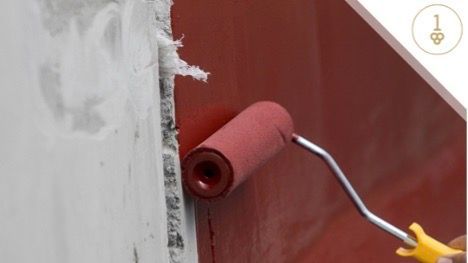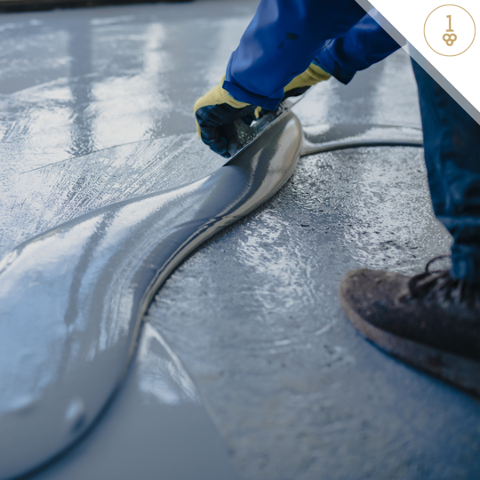Painting the Basement: DIY Tips and Tricks

Basements tend to go unnoticed and may deteriorate over time. If the paint is starting to chip or peel, or if the space is aging and no longer suits your needs, it is definitely time to paint the basement.
This post will tell you when to paint, what paint to use, how to prepare and what to expect when painting your basement.
What Type of Paint Should You Use in the Basement?
Because basements tend to be damp spaces, the paint that you typically use in a living room or bedroom won’t be appropriate for an environment with a higher level of humidity.
Use waterproof paint to keep condensation from forming between the foundation concrete and the drywall, which helps keep mold and mildew from growing in the walls. If your basement is unfinished and has concrete walls, waterproof paint reduces the amount of moisture that seeps through the walls. Either way, using waterproof paint helps ensure your basement storage or family rooms stay dry and comfortable.
Choose a lighter color that helps brighten the space and make it feel more airy and open.
How to Prepare the Basement for Painting
Before you paint your basement walls, like any room, you need to make sure the basement is clean. Vacuum the walls and floor, then wash them with soap and water to get rid of any dirt, dust, grease, and other debris. Run a dehumidifier after you wash the walls to dry up any residual moisture to ensure the paint dries more quickly.
After you clean and dry the walls, seal any cracks or holes to keep water from seeping through and damaging the walls. Sealing holes and cracks can also smooth the surface for painting more easily.
If the walls are currently glossy, use sandpaper to create a rough surface to help the paint adhere more easily.
Depending on how big your basement is, prepping and painting could take the amateur painter several days, especially because you need a dry basement for the paint to adhere.
How to Paint the Walls in the Basement
If you’ve got drywall in your basement, apply a primer before you paint. Typically for basement drywall, latex primer is recommended as a durable, moisture sealant.
Use polyester or nylon brush to cover the edges of the walls with primer, and then paint through the middle of the walls. Always check the primer label to make sure you’re using the appropriate type of paint over top. Some paints will be compatible with certain types of rollers or a paint sprayer. Follow the instructions carefully.
What About Painting the Basement Floor?
If you have a concrete floor in your basement and are considering painting it, use an epoxy paint, which is the most durable, versatile paint for concrete.
PREP
You’ll need to prep the floor by removing as many lumps and patching as many cracks and divets as possible so your efforts aren’t wasted. Concrete floors can also attract sticky residues and other gunk, so prepare for scraping as well. If you need to degrease the area, you’ll likely need to wet the concrete down – use a mop to saturate the concrete and keep a wet-dry vac handy for excess water. Then you’ll need to run the dehumidifier for a while before painting because paint sticks only to clean, dry surfaces.
PRIME & PAINT
Make sure the floors are clean and dry, and double check that you have all of the supplies you need before you get started. Apply primer after taping off any important areas, ducts, or vents, and then apply the epoxy paint ONLY when the primer has dried completely.
SEAL
Epoxy paint can be used without sealant, but for long-lasting results to ensure the best use of your time, choose an interior sealant and apply as you did the primer and paint.
When is the Best Time to Paint the Basement?
The best time to paint the basement is in a time of warm weather and low humidity – so spring and fall are the best seasons in our area for this. A very hot or cold room will inhibit the primer and paint from drying thoroughly, as will the higher summer humidity levels.

Get Painting!
Those are the basement basics! Spruce up your underground basement space this spring by painting it. Give it a fresh look. Whether your basement is finished, half-finished or unfinished, used for storage or used for family activities, give it a boost. Doesn’t every room in your home deserve to look as good as can be?
Related Post: Designer's Tips: 5 Tips for Selecting a Color Scheme
Related Post: To Refinish or To Replace - How to Refresh Your Entryway










